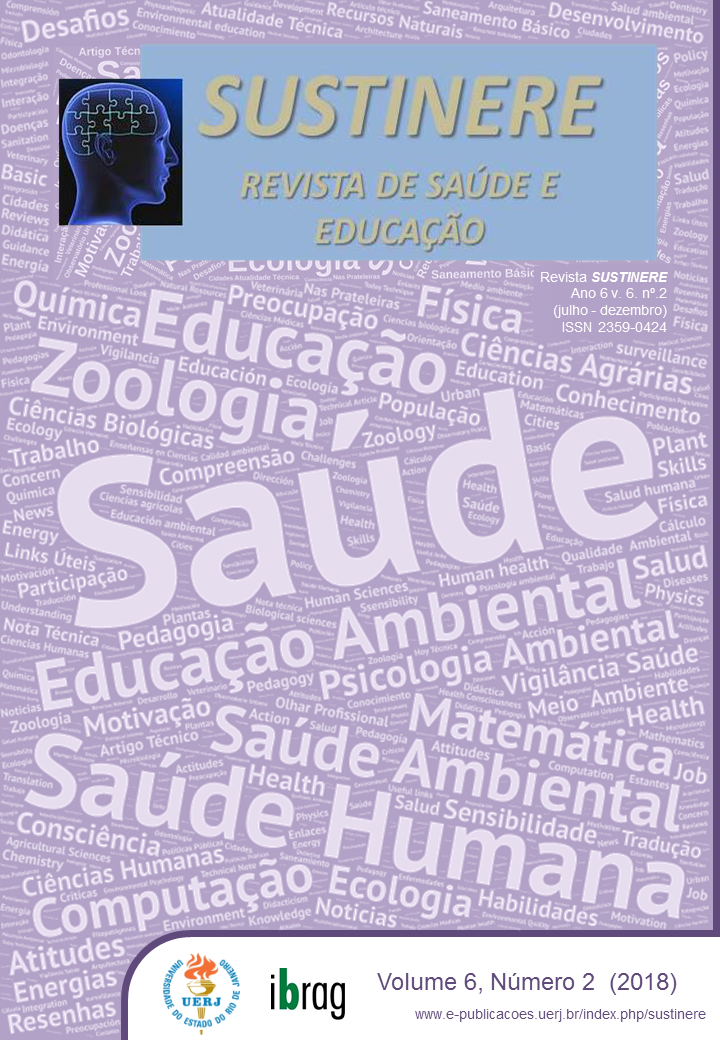Consequências diretas da má conservação das estradas com vistas ao consumo de combustível, velocidade média e desgaste dos pneumáticos
DOI:
https://doi.org/10.12957/sustinere.2018.36477Palavras-chave:
Rodovias, Conservação, Anti EconomiaResumo
O Brasil possui uma enorme extensão territorial e, 60% do transporte de suas cargas fluem pelas rodovias federais, estaduais e municipais. Sendo assim, o transporte de carga gira um negócio bilionário em todo o país capaz de promover o desenvolvimento. Contudo, na mesma medida da importância dessa modalidade de transporte está o descaso da classe governante do país com a construção e manutenção das estradas brasileiras. Isso tem promovido um incremento nos custos do transporte e, consequentemente, na cadeia produtiva de vários produtos, impactando diretamente seus preços. Existem poucos estudos sobre o impacto direto da má conservação das estradas na economia e grande parte do que existe é feito pela Confederação Nacional dos Transportes- CNT. Essa falta de dados sobre o setor se deve ora pela dificuldade no controle das variáveis, ora pela complexidade do assunto. O presente estudo teve por objetivo analisar três parâmetros fundamentais que é o consumo de combustível (Km/L), velocidade média (Km/h) e desgaste dos pneumáticos. Para isso, foi realizada a coleta dos dados em 21 viagens, em duas rotas conhecidas, a saber: Patos de Minas-MG a Fortaleza-CE e Patos de Minas-MG a Santa Maria- RS. A primeira possui condições piores de tráfego em mais de 60% do trecho, tais como pista irregular e com buracos, má sinalização, falta de acostamento, dentre outras.. Os resultados demonstram haver diferenças estatísticas entre as rotas para os três parâmetros estudados, sendo que os mais negativos foram encontrados nos trechos onde há piores condições de conservação.Referências
ALAMGIR, M., CAMPBELL, M. J., SLOAN, S., GOOSEM, M., CLEMENTS, G. R., MAHMOUD, M. I., & LAURANCE, W. F. (2017). Economic, Socio-Political and Environmental Risks of Road Development in the Tropics. Current Biology, 27(20), R1130–R1140. https://doi.org/10.1016/j.cub.2017.08.067
AFONSO, H. C. A. da G. Análise dos custos de transporte da soja brasileira. 2006. Tese de Mestrado (Engenharia de Transportes) – Instituto Militar de Engenharia, Rio de Janeiro. 138p.
AZAMBUJA, A. M. V., M. S. OLIVEIRA, & M. L. P. LIMA. (2015). Aplicação do Modelo de Análise de Janelas DEA em Terminais de Contêineres Brasileiros. Journal of Transport Literature, 9 (4), 25-29. [ Links ]
CNT. Confederação Nacional dos Transportes. Transportes de cargas no Brasil. Centro de Estudos em Logística – COPPEAD, 2002. Disponível em: htpp.. Acesso em: 04 Jan de 2006.
CENTRO DE ESTUDOS EM LOGÍSTICA (CEL); CONFEDERAÇÃO NACIONAL DOS TRANSPORTES (CNT). Transporte de carga no Brasil: ameaças e oportunidades para o desenvolvimento do país. Rio de Janeiro, set. 2017. Disponível em: <http://www.coppe.ufrj.br>. Acesso em: janeiro. 2018.
CONFEDERAÇÃO NACIONAL DOS TRANSPORTES (CNT). Boletim econômico. Brasília, jan. 2017. Disponível em: <http://www.cnt.org. br/cnt/downloads/becon/BeconCNT012006.pdf>. Acesso em: 22 jan. 2018.
FIESP – FEDERAÇÃO DAS INDÚSTRIAS DO ESTADO DE SÃO PAULO. Conceito de logística. Brasília: Fiesp, 2016. Disponível em: <http://www.fiesp.com.br/transporte-elogistica/>. Acesso em: outubro de 2018.
GOOGLE MAPS. Rotas estudadas. Disponível em: https://support.google.com/maps/answer/144339?co=GENIE.Platform%3DDesktop&hl=pt-BR. Acesso 10 julho 2018.
MERCEDES BENZ. Centro de Estudos de Motores e Tecnologia. São Paulo, 2018. Disponível em: https://www.mercedes-benz.com.br/caminhoes. Acesso em outubro de 2018.
VIPAL. Guia de danos e desgaste. Cadernos Técnico. Lajeado RS, 2016.
UOL. Revista eletrônica Caderno de Economia. São Paulo 2018. Disponível em : https://economia.uol.com.br/noticias/efe/2018/09/20/sem-investimentos-50-das-estradas-do-pais-estarao-em-mas-condicoes-ate-2025.htm. Acesso em outubro de 2018.
Downloads
Publicado
Como Citar
Edição
Seção
Licença
Os Direitos Autorais dos artigos publicados na Revista Sustinere pertencem ao(s) seu(s) respectivo(s) autor(es), com os direitos de primeira publicação cedidos à Revista SUSTINERE.
Os artigos publicados são de acesso público, de uso gratuito, com atribuição da autoria original obrigatória, de acordo com o modelo de licenciamento Creative Commons 4.0 adotado pela revista.

A Revista Sustinere está licenciada com uma Licença Creative Commons Atribuição 4.0 Internacional.






